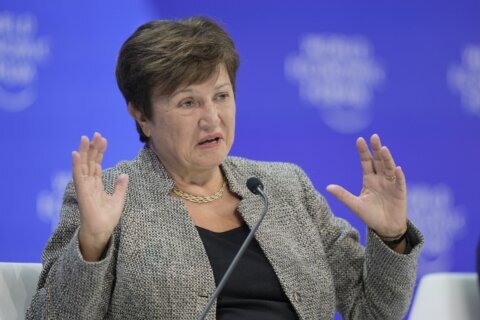WASHINGTON — How many times have you said, “I didn’t see that coming!” Perhaps you weren’t paying attention or didn’t expect a certain result.
There’s a similar expression that I often hear from clients and friends: “I don’t see anything that …”
I consider these the five most dangerous words in investing — it can get you into trouble.
I’ve heard people say this when things are good or bad: When the stock market is soaring, they don’t see anything that could bring it down; when the economy is struggling, they don’t see anything that will turn it around.
As an example, until recently, most investors were down on Europe. The sentiment I heard over and over was, “I don’t see anything that will turn Europe around,” or “I don’t see anything that will cause European stocks to do well.”
This populist view was a contributing factor to better values in European stock prices. To contrarians, such as myself, however, it was a signal that it may be time to buy.
Only four months into the year, the U.S. markets are up slightly, German stocks are up 22 percent and Europe, overall, is up in the midteens.
Let’s look at the rapid rise of the U.S. dollar. Given the slow and uneven pace of U.S. economic growth since 2008, it is no wonder that I heard, “I don’t see anything that will make the dollar rise.” I remember a national financial magazine’s cover that read, “How to benefit from the falling dollar,” just before the dollar’s ascent.
At times when things get really bad, even investors who feel they are immune to the sentiments of the crowd can get caught up in the momentum. Within days of the bottom of the tech bubble in October 2002, the same sentiment was being said again and again: “I don’t see anything that will turn around the U.S. stock market.” I had one client who said, “I don’t see anything that will cause the market to come back in my lifetime!”
In all honesty, it was hard for anyone to be pro-U. S. stocks in the early 2000s. Internet companies evaporated into the thin air; Enron and WorldCom’s spectacular fall from grace put a spotlight on corporate greed and fraud; and in September 2001, the country experienced the first attack on U.S. soil since World War II. From the peak of the market in March 2000 to the bottom in October 2002, the Nasdaq Composite lost 78 percent of its value, and the S & P 500 lost nearly 50 percent.
But by the first quarter of 2003, things began to turn around, and at the end of 2003 the S & P was up 28.7 percent. Those who pulled out of the market to sit on the sidelines missed the rebound.
So what’s the moral to this story? My advice is to be cautious and mindful when you feel or say, “I don’t see anything that …” Good or bad: You won’t see it coming.
No one can predict when inflation will rise or when Apple will fall. Making investment decisions that follow conventional wisdom is doomed to fail as the crowd is often wrong at the worst of times. Instead, it’s important to have a plan that is open to seeing the changes and opportunities taking place within the markets.







